You’ve just hired a new Chief Revenue Officer (CRO). You’re anticipating what’s next, right?
In the first 90 days, expect a period of adjustment, strategy development, and plan execution. It’s crucial to understand your CRO’s role and evaluate their performance effectively.
Let’s delve into what these initial months may look like and how you can guide your new addition towards success beyond this initial phase.
Table of Contents
ToggleKey Takeaways
- Familiarize with company culture, working style, and decision-making processes
- Build relationships with key stakeholders and align personal goals with company objectives
- Formulate a robust strategy by analyzing the current situation, strengths, weaknesses, and growth opportunities
- Implement and execute plans while maintaining open communication, regularly reviewing progress, and reassessing risk management strategies
Understanding the Role of a CRO
A CRO, or Chief Revenue Officer, essentially oversees all revenue-generating processes in your company. They’re responsible for aligning all departments that impact revenue including sales, marketing, and customer service.
Why is this alignment so crucial? Simply put, it ensures everyone is moving in the same direction towards a shared goal. The CRO’s role includes coordinating with these teams to develop strategies that maximize profits and ensure sustainable growth.
Imagine your company as a car. Different parts are working independently but they’re also interconnected. If one part fails to perform effectively, it can affect the whole system. That’s where your CRO steps in – they’re like a skilled mechanic making sure everything runs smoothly.
Your new CRO will need to have an excellent understanding of market trends and customer behavior to successfully drive revenue growth. They’ll use this insight to create effective business strategies and make informed decisions on resource allocation.
In essence, your CRO should be an expert navigator guiding your company through the complex world of revenue generation while ensuring every facet of your business is optimized for success.
Week 1-4: Settling Into the New Position
During the initial weeks, it’s crucial to familiarize yourself with the company culture and working style. Soak up as much information as you can from team meetings, one-on-ones, and casual water-cooler chats. Observe how decisions are made, how teams collaborate, and what values drive actions.
Understanding your role as a Chief Revenue Officer (CRO) during this period is equally essential. You’re tasked with driving revenue growth while ensuring customer satisfaction—a delicate balance that requires strategic thinking and keen insight into market trends.
Additionally, try to get a sense of the sales cycle within the company. Who are your primary customers? What channels generate most leads? Which strategies have been successful in the past?
Next comes relationship building. Foster connections with key stakeholders—your sales team, marketing department, customer service reps—everyone who plays a part in revenue generation. Their insights will be invaluable moving forward.
Lastly, don’t forget about setting personal goals for success. Align these with broader company objectives to ensure you’re contributing effectively to overall growth.
Remember that this settling-in phase is just that—a phase. It’s intense learning coupled with rapid action taking that sets the stage for future achievements.
Week 5-8: Developing Strategy and Goals
As you move into the next phase of your journey with your new CRO, developing strategy and setting goals become the crucial elements that require your attention.
Understanding the strategy formulation process isn’t just about delineating a path to success; it’s about understanding its importance, how to set achievable goals and align them effectively with your overall strategy.
You’ll find that crafting insightful strategies and setting detailed, aligned goals are key components that will drive both personal growth and organizational progress.
Strategy Formulation Process
In the initial stages, it’s crucial to work with your new CRO to formulate a robust and effective strategy. This process involves analyzing your company’s current situation, identifying key strengths and weaknesses, as well as deciphering opportunities for growth. In doing so, you’ll be able to craft a plan that capitalizes on your assets while addressing areas of improvement.
Your new CRO should actively involve you in this process; after all, knowledge is power. You’ll gain insight into the strategic thinking driving their decisions and actions moving forward. Understanding the ‘why’ behind each move allows you to anticipate results and manage expectations.
Ultimately, successful strategy formulation hinges on thorough analysis, mutual understanding between you and your CRO, and clear communication of goals and anticipated outcomes.
Goal Setting Importance
Setting clear and measurable goals is a critical aspect of any successful business strategy. As you embark on your new journey with a CRO, you’ll find goal setting to be an indispensable tool in driving success. It’s not just about setting random targets. You need to ensure they’re SMART – Specific, Measurable, Achievable, Relevant, and Time-bound.
Analyzing each goal’s relevance keeps you aligned with your overall business objectives while being specific ensures clarity for your team. Having measurable aspects allows for trackable progress which fosters motivation and engagement within the team.
Remember that setting achievable goals maintains morale; nothing is more demotivating than unattainable targets. Lastly, having time-bound goals ensures momentum is maintained throughout your project lifecycle.
Aligning Goals, Strategy
Aligning goals with strategy is crucial for successful project outcomes. It’s not just beneficial; it’s crucial. Ensuring that the objectives you’ve set match the plan you’re implementing creates a clear path for your team, enhancing efficiency and productivity.
Consider this: if your goal is to increase customer engagement, but your strategy focuses on boosting sales without customer interaction, there’s a mismatch. You’ll end up wasting resources on tactics that don’t contribute to your goal.
Thus, careful analysis of both goals and strategies is essential. You need to understand what you want to achieve and how each action contributes towards that aim. It’s not about doing more work; it’s about making sure every effort counts in reaching your ultimate target.
Week 9-12: Implementing and Executing Plans
By weeks 9-12, you’ll be fully engaged in implementing and executing the plans you’ve developed with your new CRO. This can be a challenging yet exciting time as the rubber meets the road. You’ll see initial results of your strategic decisions taking shape.
During this period, it’s crucial that you maintain open communication with your CRO. Regularly review project progress and make necessary adjustments. Your flexibility will be tested as market conditions evolve or unexpected hurdles arise. Stay alert to these changes and respond swiftly.
The implementation phase is also a time for reassessing risk management strategies. You should ensure that mitigation plans are in place for any potential risks identified during planning stages. It’s essential that no stone is left unturned when it comes to safeguarding your company’s interests.
In addition, don’t forget the importance of staying connected with your team during this critical phase. Their buy-in and involvement are vital for successful execution of the plan. Encourage their feedback and address their concerns promptly.
Evaluating the Performance of Your CRO
It’s essential to assess how well the CRO’s performance aligns with the set goals and objectives. You’ve reached a critical juncture in the first 90 days, where it’s time to evaluate, analyze, and draw conclusions.
Look closely at whether they’ve successfully implemented and executed the plans laid out in weeks 9 through 12.
Take note of key performance indicators (KPIs). Is there an increase in conversion rates? Has customer retention improved? If these metrics are moving upwards, it shows your CRO is making positive strides towards achieving your business targets.
However, numbers alone don’t present the whole picture. It’s equally important to gauge their leadership skills, communication abilities, and how they’re fitting into your company culture. Are they leading their team effectively? Have they established good rapport with other departments?
Also consider intangible factors such as innovation and strategic thinking. Has their input led to fresh ideas or new directions for your company? Remember that any assessment should be holistic – capturing both tangible results and softer skill sets.
In short, evaluating a CRO’s performance shouldn’t just be about ticking off boxes but understanding their overall impact on your organization.
Planning for Success: Beyond the First 90 Days
You’ve made it past the initial 90 days with your new CRO, but what’s next?
It’s time to shift your focus towards developing a long-term CRO strategy and identifying measures for sustained success.
In this discussion, we’ll delve deep into strategic planning that ensures continued growth, as well as how to effectively gauge ongoing performance in an insightful and detailed manner.
Long-term CRO Strategy
In the long run, you’re going to want to develop a strategy with your CRO that aligns with your company’s overarching goals. This isn’t just about short-term wins; it’s about building a sustainable, scalable model for growth.
You’ll need to analyze trends, identify key performance indicators, and continually refine your approach based on data-driven insights. It can be tempting to focus solely on immediate results, but don’t lose sight of the bigger picture.
Consider also the value of consistency in this process. Your CRO’s strategies should resonate across all business activities and decisions. There’s no room for silos when you’re aiming for company-wide success.
Remember: A well-aligned strategy doesn’t just impact revenue – it shapes your entire organisation’s trajectory towards its strategic objectives.
Sustained Success Measures
Achieving sustained success isn’t just about meeting short-term goals. It’s about consistently hitting key performance indicators and maintaining growth over time.
You’ll need to continually optimize your conversion rate strategy, ensuring it remains relevant and effective in the face of evolving market dynamics. Your CRO should be closely monitoring metrics such as bounce rate, exit rate, and conversion rates for different segments of your audience. They should also be able to provide you with detailed insights into these metrics, identifying trends and patterns that can inform future strategies.
Don’t get complacent once initial improvements are seen; constant vigilance is key in this game.
It’s also crucial to remember that CRO isn’t a one-size-fits-all approach – what works today might not work tomorrow. Stay agile and keep testing new ideas for sustained success.



